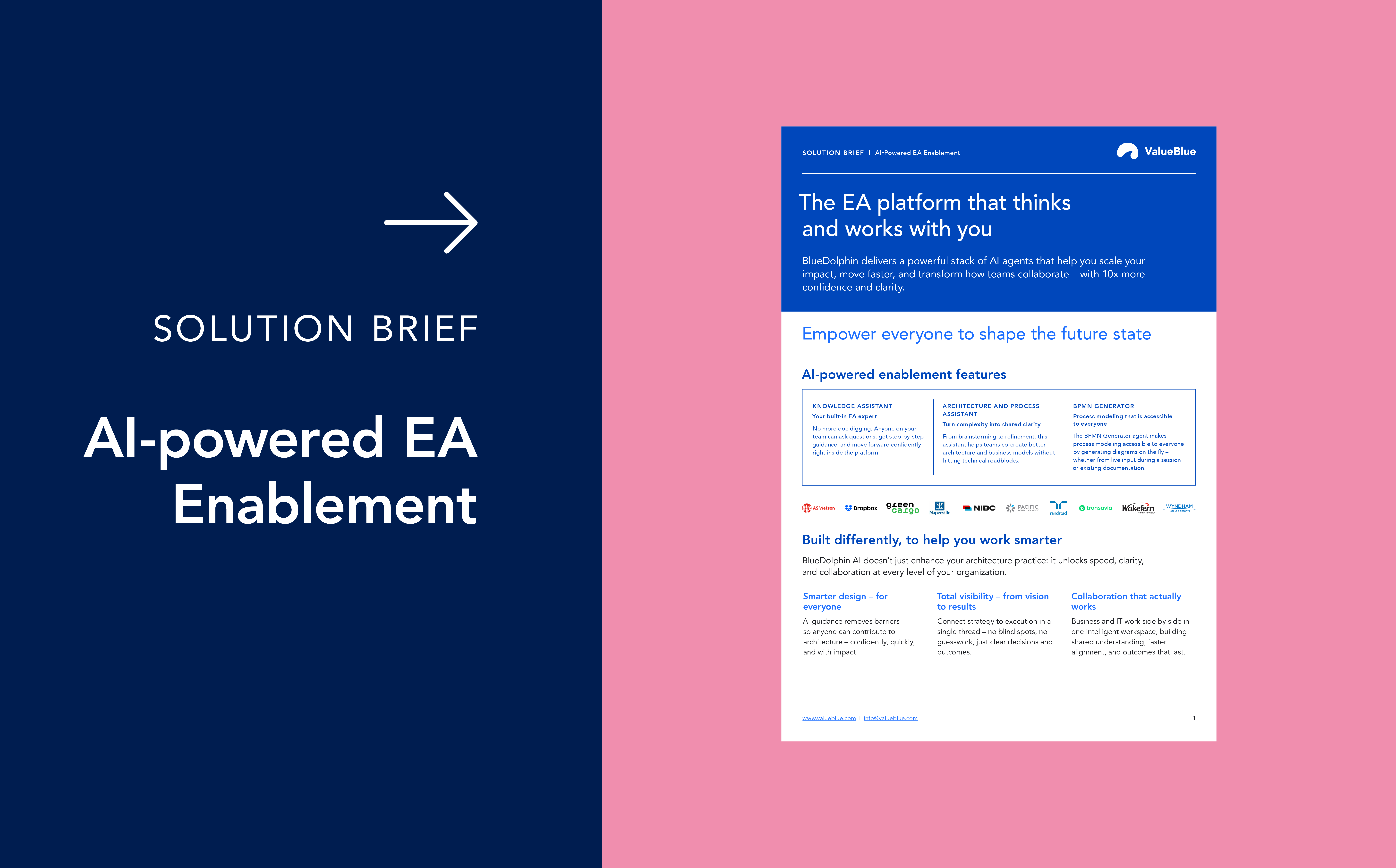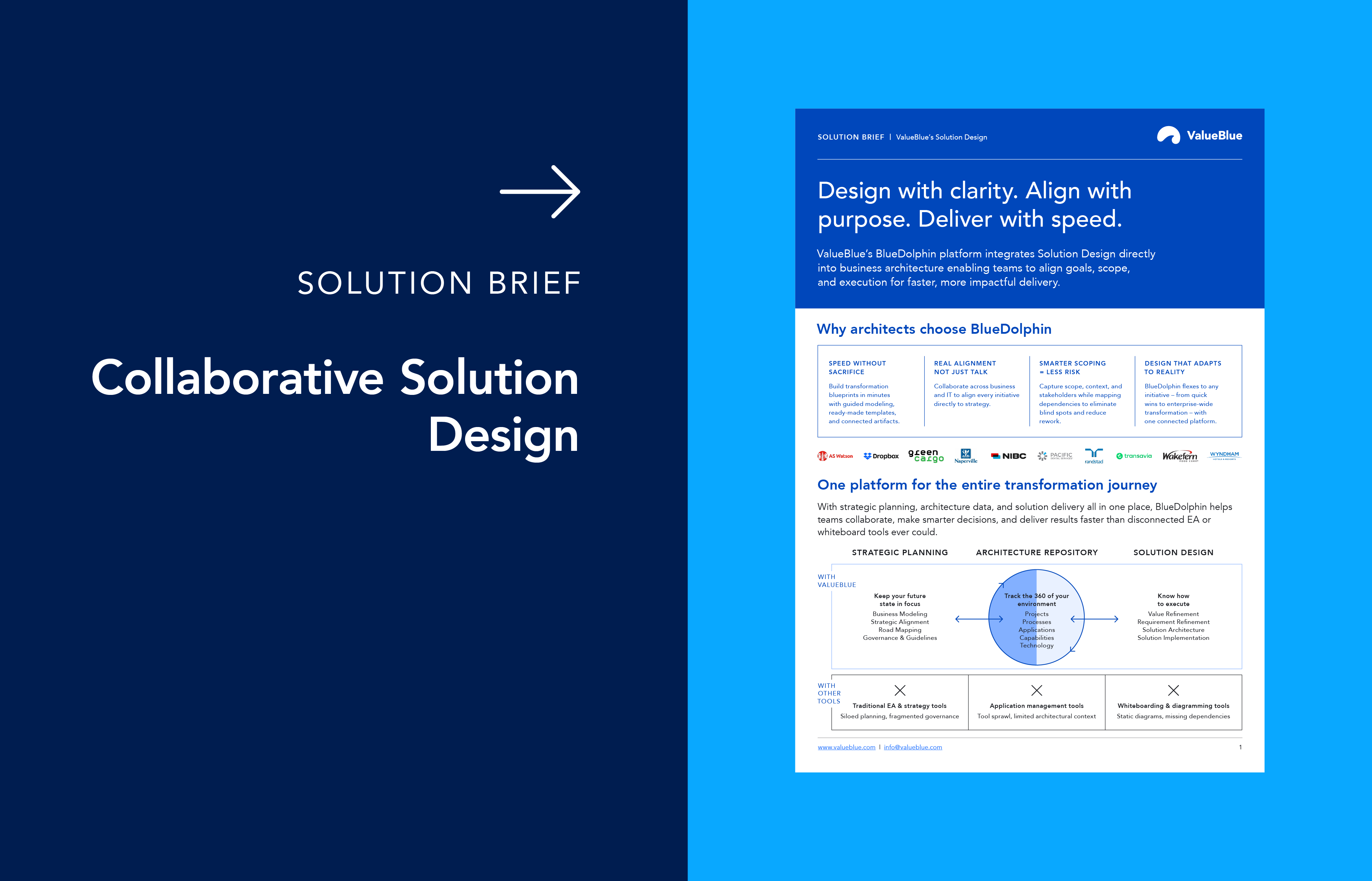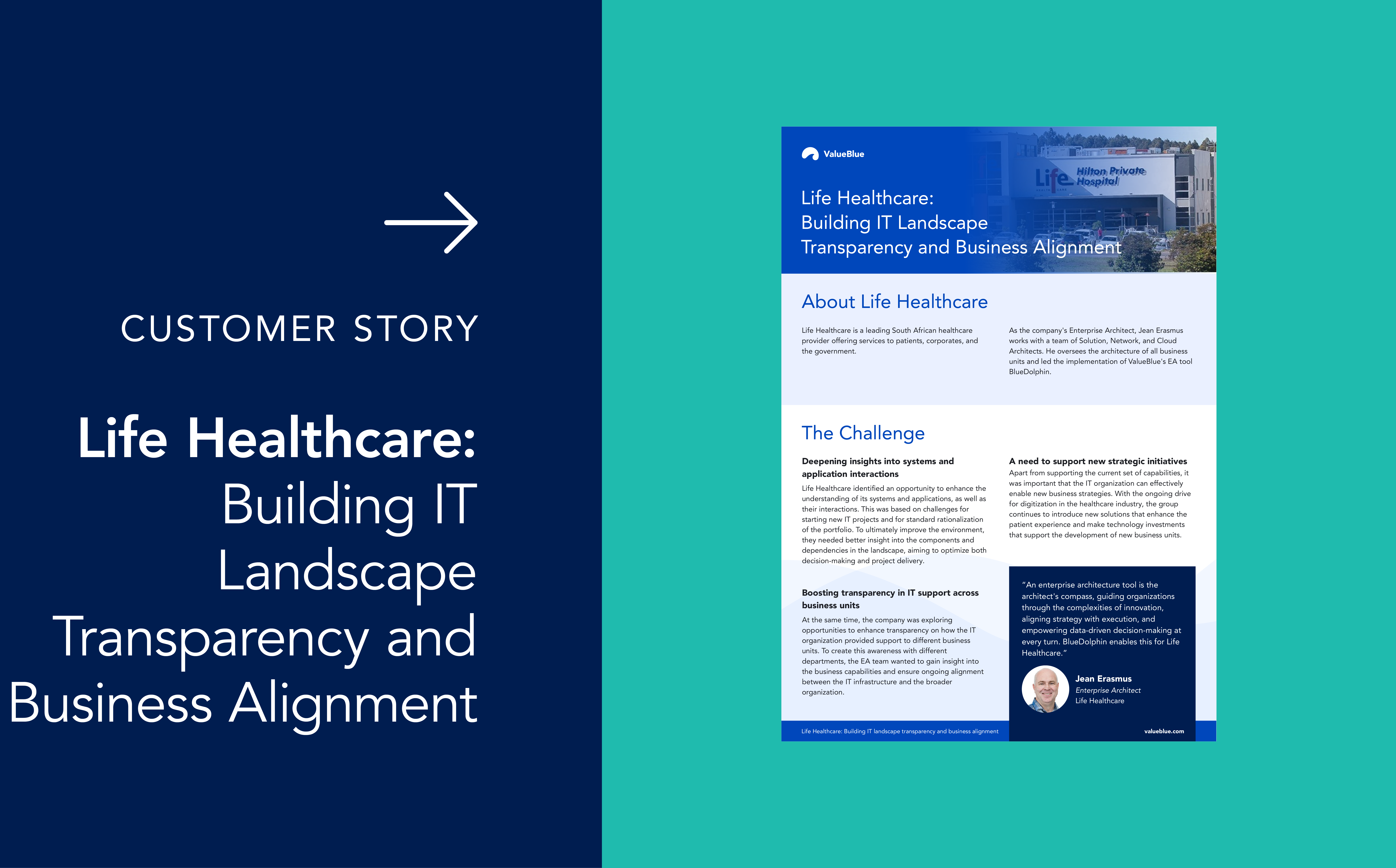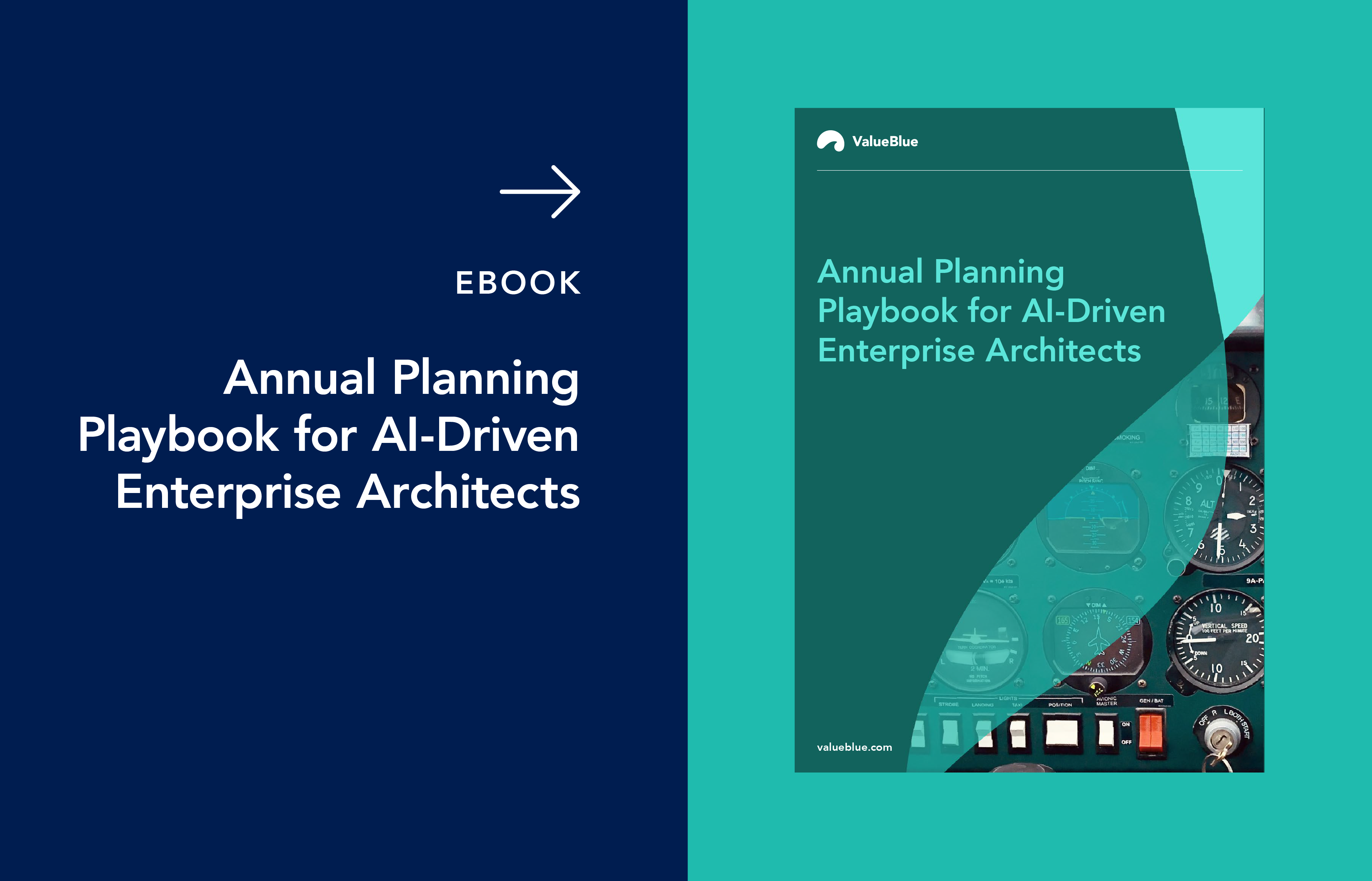How Enterprise Architecture Helps Break Free from US Tech
Across Europe and globally, organizations and governments alike are sounding the alarm about growing dependence on US technology giants. Experts are warning that relying on Microsoft, Google, and Amazon for core services such as email, data storage, and collaboration creates serious vulnerabilities in terms of data privacy, sovereignty, and business continuity. If access to these services is disrupted – by a geopolitical event, a policy change, or a legal order – business operations, research, and teaching could grind to a halt. Recent outages – which affected healthcare, finance, and education sectors across multiple countries – and abrupt policy changes by the Trump administration have prompted organizations to consider alternatives.
This, of course, is easier said than done. For many organizations, US tech solutions are deeply woven into everyday operations, from communication tools to data storage and business-critical applications. Untangling these dependencies can seem overwhelming, yet there is a structured way to approach this challenge and bring clarity to the complexity: Enterprise Architecture.
Enterprise Architecture: Your roadmap for digital independence
Enterprise Architecture (EA) gives you the structure and visibility to map your current state, assess risks, and chart a practical path toward greater digital autonomy. Here’s how it can guide your business:
1. Map your current dependencies
Start by using an EA tool to create a map of your IT landscape, including all your applications, data flows, infrastructure, and business processes. Identify which systems rely on US-based providers, such as cloud platforms, SaaS tools, authentication services, and data storage.
Just as companies facing new tariffs must map their supply chains to see which suppliers and systems are affected, you need to know exactly where your business is exposed. This mapping process often reveals hidden dependencies and legacy systems that have quietly become critical over time.
2. Assess risks and business impact
With a clear map in hand, Enterprise Architecture enables you to assess the business impact of losing access to specific providers or systems. For example, what would happen if your email, CRM, or ERP – currently running on a US-based cloud – became unavailable overnight? Which business processes would be interrupted? Which compliance obligations would be breached?
EA frameworks help you model these scenarios, quantify risks, and prioritize which dependencies to address first. This risk-driven approach ensures you focus resources where they matter most, avoiding both panic-driven overhauls and costly inaction.
3. Identify compliance and sovereignty gaps
Enterprise Architecture makes it easy to spot where your current architecture falls short of local regulations or data sovereignty requirements. For example, if your customer or research data is stored with a US provider, you may be exposed to US government access under the Cloud Act, even if the data is physically in Europe.
EA helps you systematically identify these gaps and plan migrations to providers under your jurisdiction, ensuring compliance and reducing legal risk.
4. Model and test your transition scenarios
Before making any changes, Enterprise Architecture tools allow you to model different transition scenarios. For example, you can simulate what happens if you migrate your Enterprise Resource Planning (ERP) from a US-based provider to a European one. Which integrations need updating? Will your workflows and data remain accessible? What new security or compliance steps are required?
This scenario planning helps you avoid surprises and ensures your migration supports both business continuity and strategic goals.
5. Optimize your application portfolio
EA helps you audit your application landscape, surfacing redundant, outdated, or underused systems, many of which may be tied to US providers. By rationalizing your portfolio, you not only reduce your exposure but also cut costs and simplify your IT environment.
This step is crucial: many organizations discover that a significant portion of their IT spending goes to applications that are no longer essential or could be replaced with local or open-source alternatives.
6. Design a modular, future-proof architecture
Enterprise Architecture enables you to design modular, interoperable systems that make it easier to swap out components as needed. By focusing on flexibility and open standards, you reduce the risk of future vendor lock-in and make your business more adaptable to regulatory or market changes.
For example, adopting open APIs and containerization allows you to move workloads between providers with minimal disruption. This modular approach also supports innovation, letting you integrate new technologies without overhauling your entire stack.
7. Govern and accelerate your transformation
EA frameworks provide the governance needed to ensure your transition stays on track and delivers value. By establishing clear policies, standards, and checkpoints, you can effectively coordinate changes across IT, compliance, and business units, thereby reducing the risk of miscommunication or duplication of effort.
Modern Enterprise Architecture platforms facilitate collaboration, enabling stakeholders to share insights, update documentation, and track progress in real time. This transparency and agility are key to managing complex, multi-phase transformations.
8. Embed security and compliance from the start
Security and compliance are not afterthoughts – they must be integrated into your architecture from day one. EA helps you build in proactive security measures, such as threat modelling, segmentation, encryption, and continuous monitoring. It also ensures that every change is assessed for regulatory impact, reducing the risk of breaches or fines.
9. Enable continuous improvement
Enterprise Architecture is not a one-time project but an ongoing discipline. By continuously monitoring your IT landscape, updating your architecture models, and learning from each migration, you can adapt quickly to new risks and opportunities. This approach ensures that your business remains resilient and competitive, even as technology and regulations continue to evolve.
Regain digital independence and build resilience with Enterprise Architecture
Relying too much on US tech is risky, as recent outages and policy shifts have made clear. Enterprise Architecture gives you the tools and structure to break free. By following a disciplined, scenario-driven approach, you can regain control, ensure compliance, and build a business that’s resilient, agile, and ready for whatever comes next.
Ready to take the first step? Reach out to us for a custom demo.





